SPECIFICATIONS
Brand Name: NoEnName_Null
Origin: Mainland China
Material: Porcelain Enameled
Type: Soup & Stock Pots
modname=ckeditor

Enamelling is a handmade product, consisting of more than 64 processes, which inevitably results in uneven glazing, dents or scratches, as well as black spots caused by falling ash, etc. There is no such thing as flawlessness.
Scope of application:
---Gas stoves √
---Electric hobs √
---Induction hobs √
---Electric ceramic hobs √
---Halogen Ovens √
Note: Ovens and microwaves are not available!
Description:
100% brand new
Name: Enamel pot
Material: enamel
Size: 18/20/22/24/26CM in diameter
Capacity:
18CM approx. 1.9L
20CM approx. 2.9L
22CM approx. 3.7L
24CM approx.4.7L
26CM approx. 6.3L
Made from safe, non-toxic and healthy enamel, it has the advantages of acid and alkali resistance and fast heat conduction!
It is healthy, acid and alkali resistant, suitable for cooking (acid and alkaline food can be cooked) and long term food storage.
The heat conducts quickly and dissipates quickly, saving time when cooking.
Many functions, suitable for steaming and boiling things, perfect for hot milk, tea and stew!
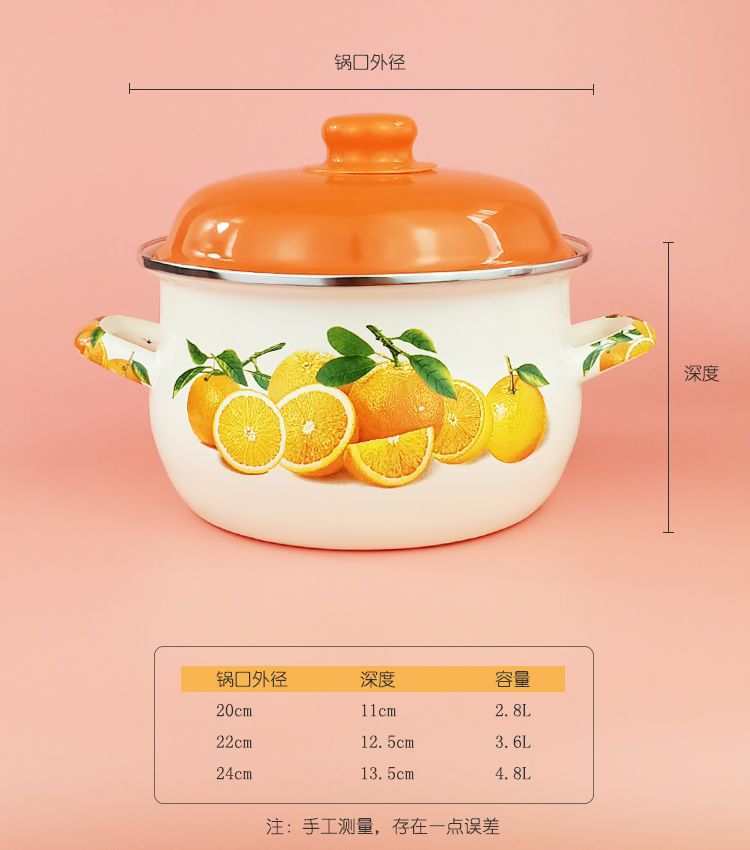
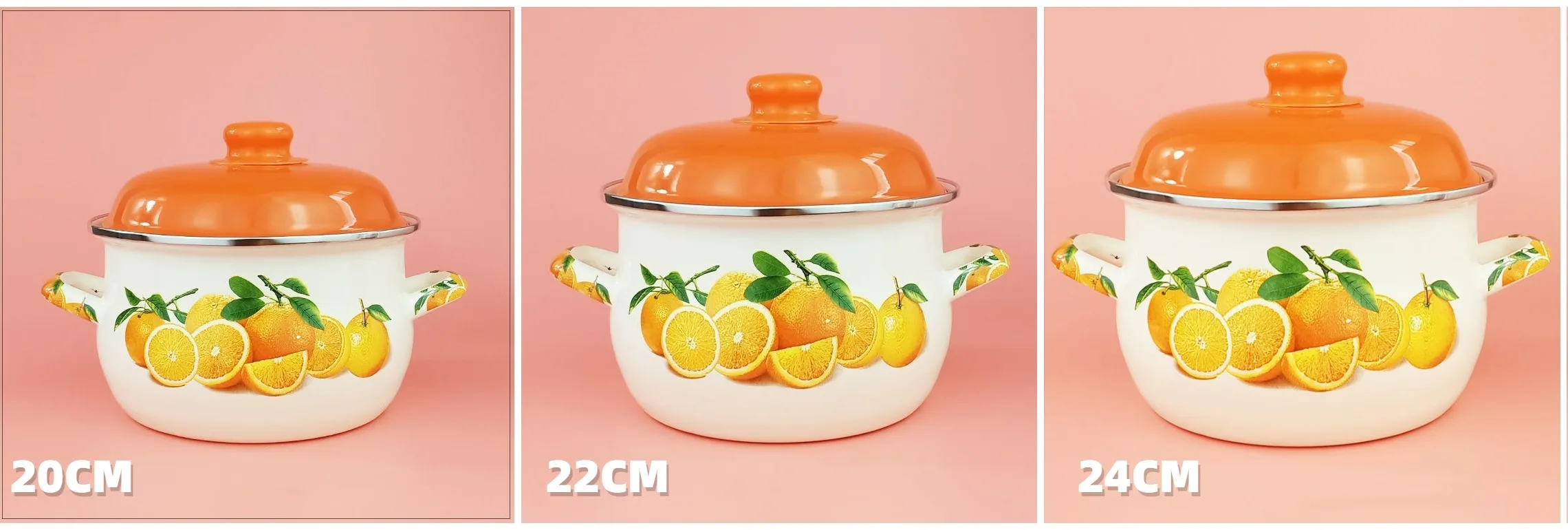
Enamel knowledge:
Enamelling is a composite material made of inorganic glassy material that is solidified by melting onto a base metal and firmly bonded to it. The surface is enamelled and fired at high temperatures to create a composite material that combines the strong and durable nature of metal with the safety and non-toxic, easy to clean and decorative advantages of porcelain enamel, while preventing metal rust, heavy metals and other disadvantages, a safe and non-toxic environmentally friendly material!
Note: As the enamel is handmade, the special nature of the enamel manufacturing process itself, the process is numerous, the enamel will have hidden traces, enamel impurities, small black spots and other craft problems, not defects, please understand.
About enamel pots
1. Can I use an induction hob/open fire?
Yes, gas, induction and electric stoves are universal, but not microwaves and ovens.
2. Can it be used for stir-frying?
Enamelled products cannot be burnt or dry-fired and the amount of oil used for frying is too small, so frying is not recommended.
3. Will the pan burn black when used on an open fire?
Enamel is fired at 800°C, so as long as there are no stains before firing, it will not generally burn black, except for the last bit left in the gas tank, where too many impurities may cause it to burn black, but it can be cleaned!
4. Is it easy to break? Will it break if dropped?
The enamel is made of metal plates, so although it won't break into pieces like ceramic, the surface may fall off, so take care of it!
Note:
1. Due to the different monitor and light effect, the actual color of the item might be slightly different from the color showed on the pictures. Thank you!
2. Please allow 1-2cm measuring deviation due to manual measurement.


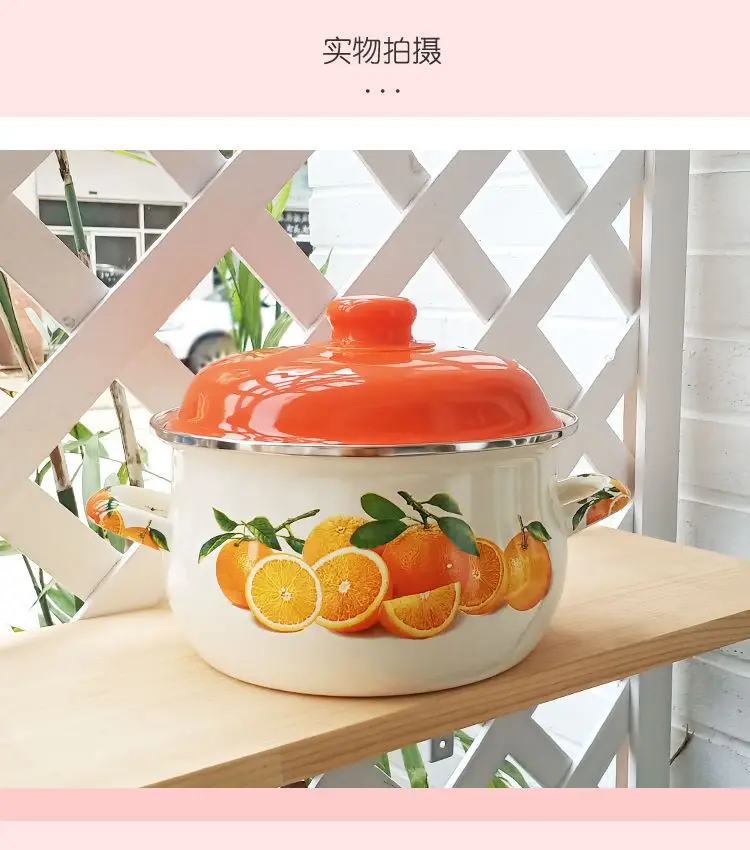
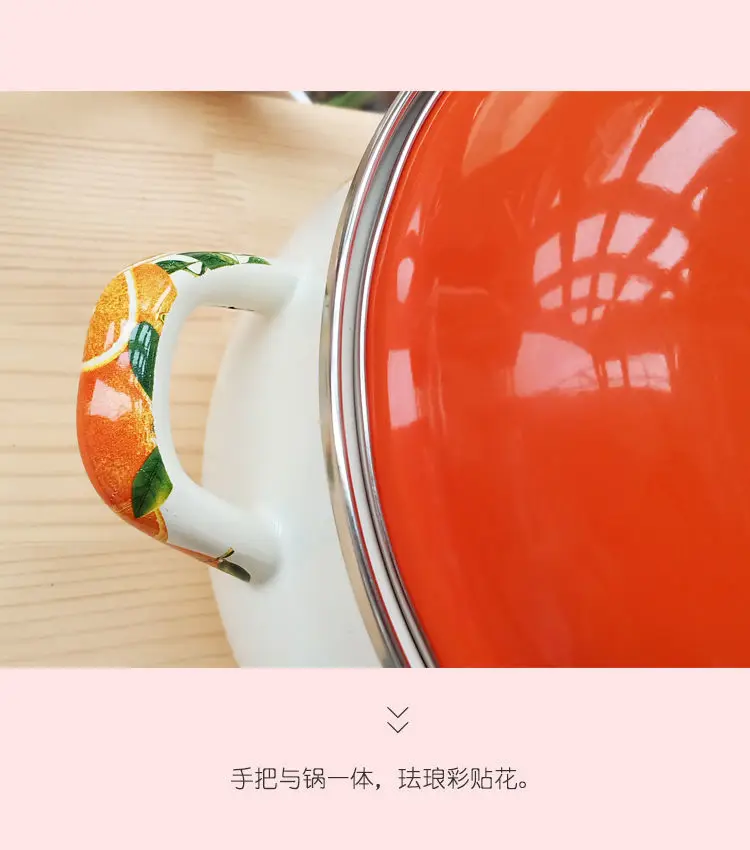
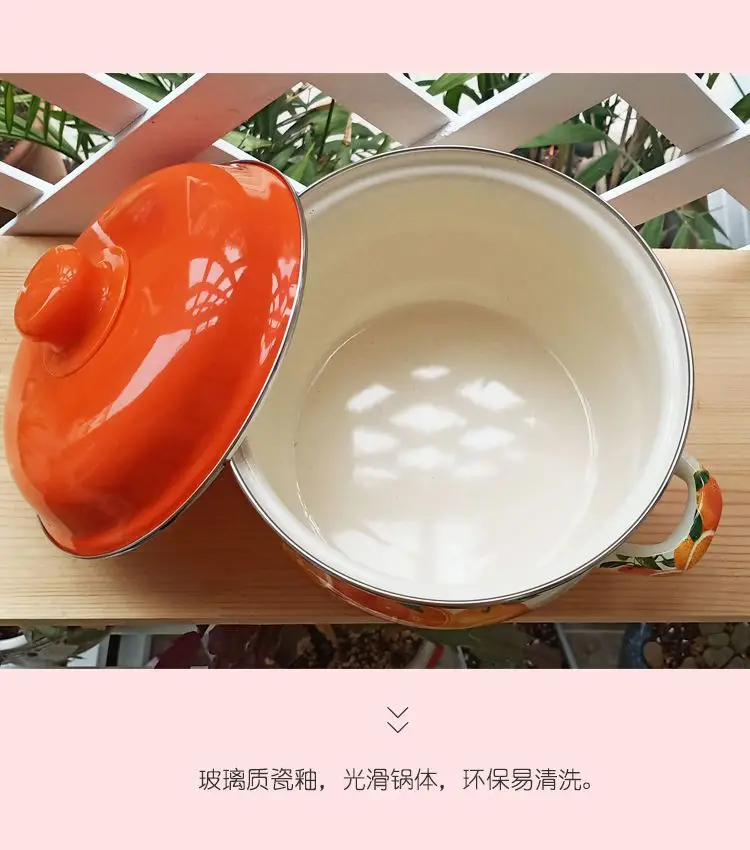
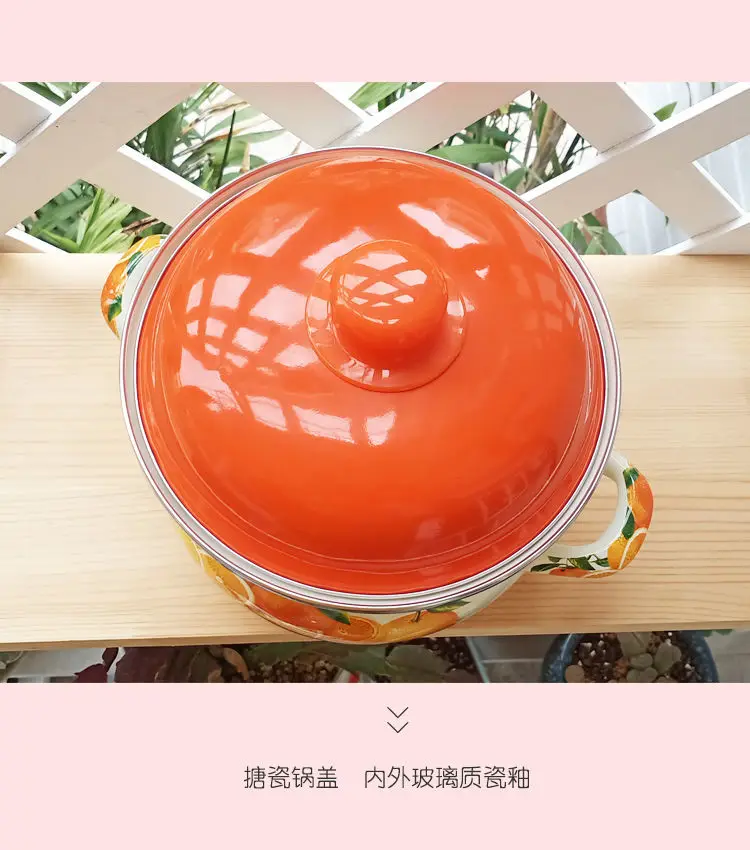
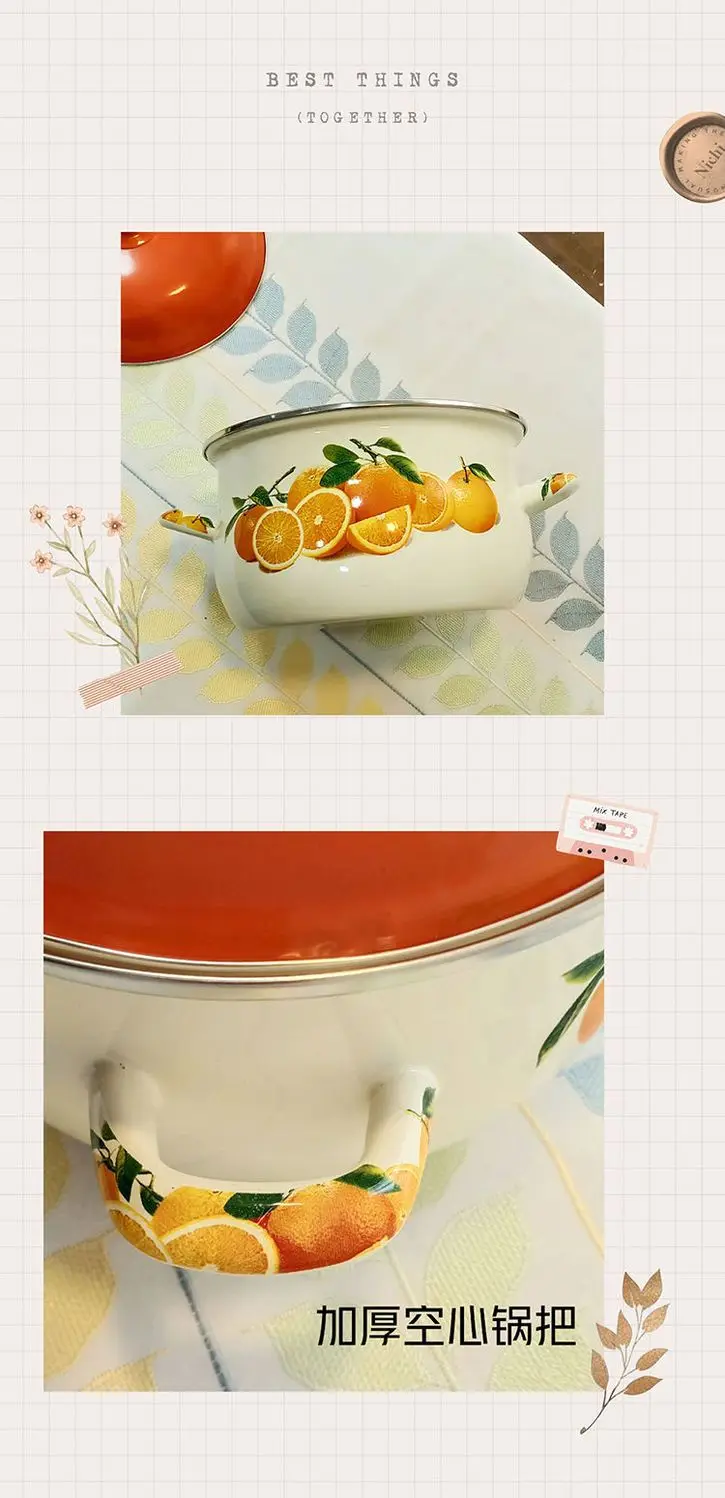
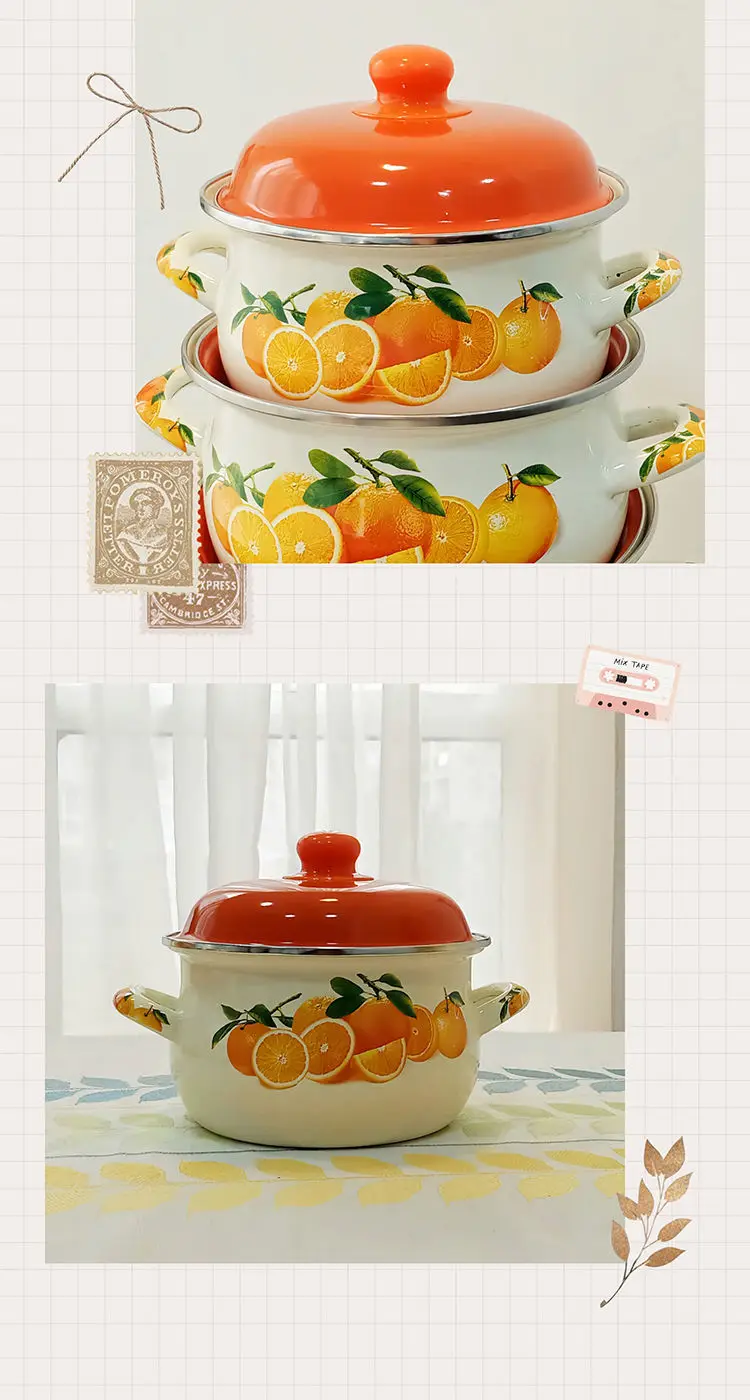
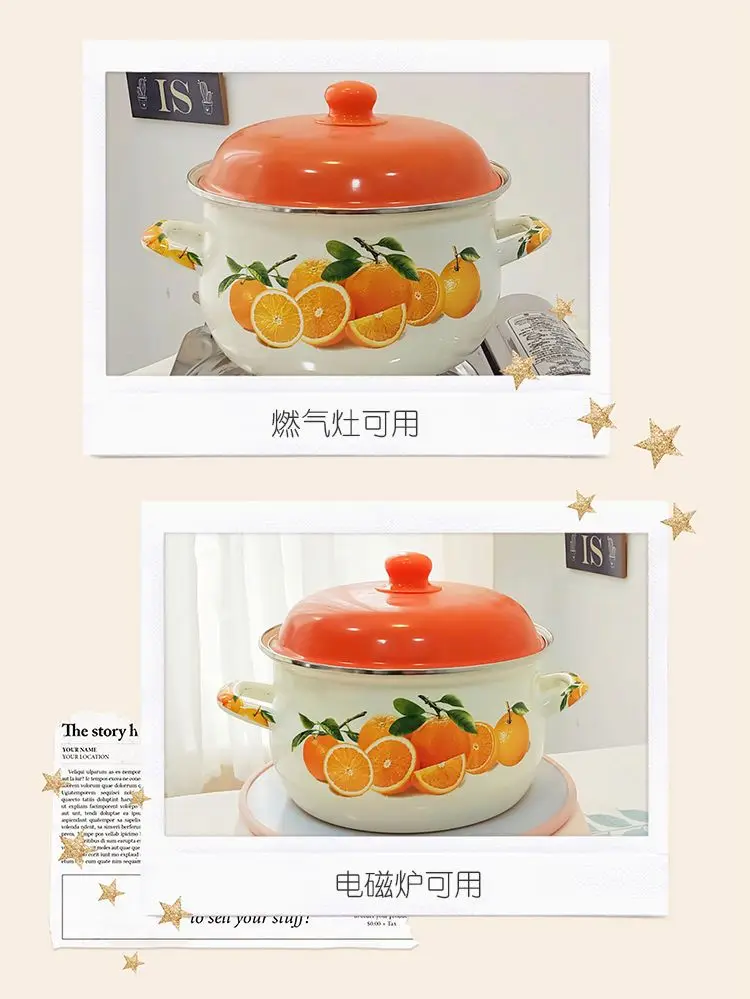
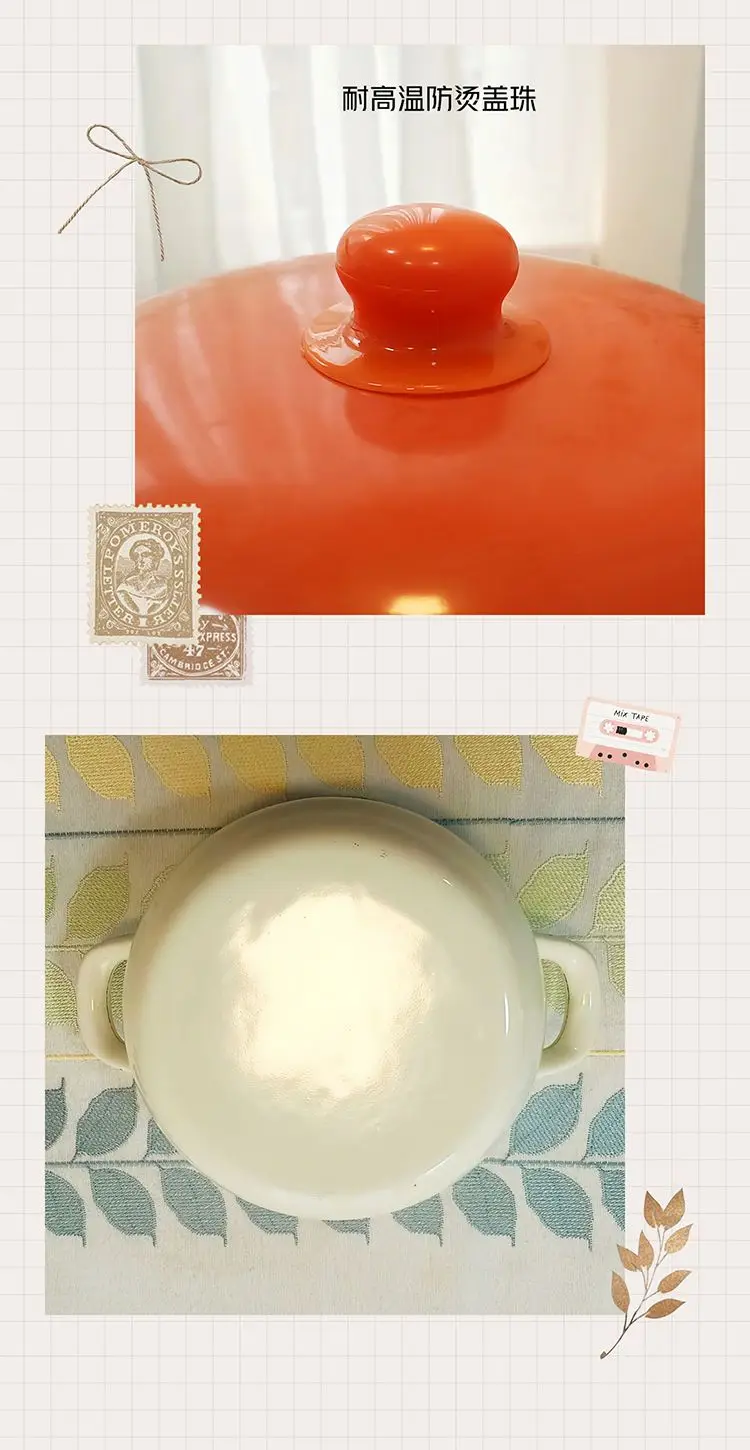
Dvantages of enamelling/enamel porcelain |
|
Care of enamelled/enamelled porcelain:
Before use
1. For newly purchased enamel/enamelled pots or pans, please do not immerse them in water for a long time, generally washing and soaking for 1-2 minutes is sufficient. After washing, dry the edges in time to avoid rusting. 2. When using a newly purchased enamelled/enamelled pot or kettle for the first time, please do not use high temperatures or cold water to reduce the useful life of the product.
In use
1. Please add water and liquid before heating, and do not burn the soup dry during use! 2. When using enamelled/enamelled pots and pans, try not to use metal spatulas, spoons, etc. 3. Enamel/enamelware is fragile and should not be dropped heavily to avoid dropping the porcelain. 4. Under normal use enamel/enamel does not easily turn black, if it burns black, simply scrub it clean with a cloth and detergent. 5. Enamel/enamel can be used on gas, induction and natural gas cookers, not in microwave ovens.
Keep dry and clean after use. Wash the handles and the rim area of the pot frequently to avoid the formation of stubborn stains.
Enamel/enamel advantages.
1. Clean and hygienic, no metal content. 2. Easier to clean than other kitchenware, no rusting and no blackening. 3. Compared to stainless steel pots or pans. Enamel/enamel is relatively chemically stable and does not melt out certain compounds (e.g., manganese, chromium and other harmful elements) at high temperatures to prevent human intake. 4. High cultural taste and artistic appreciation value.
|